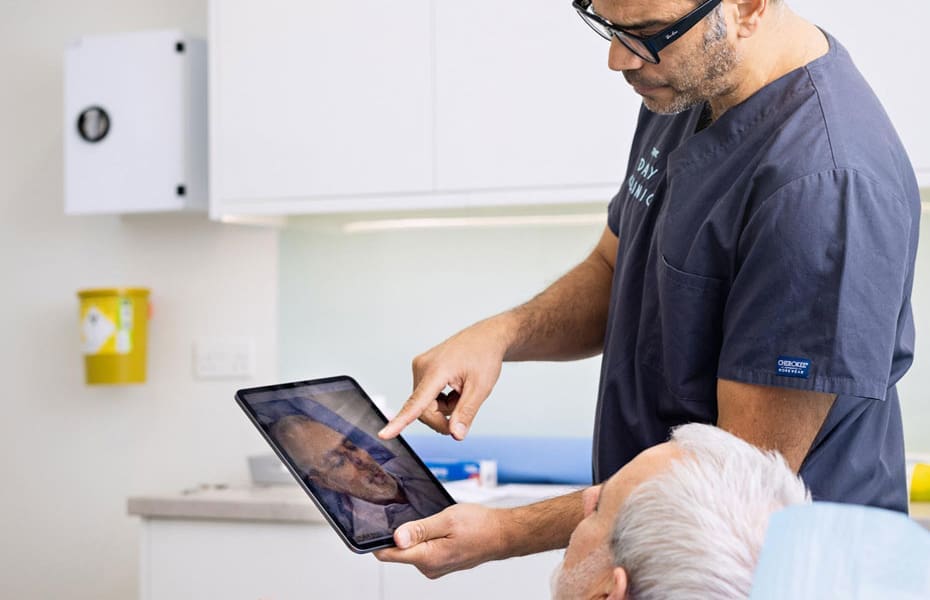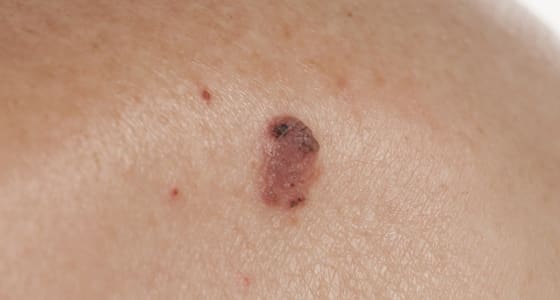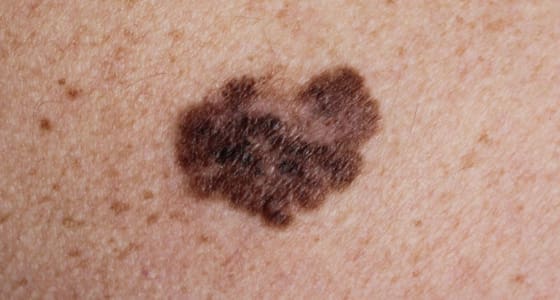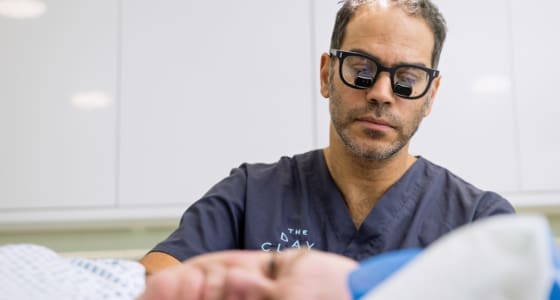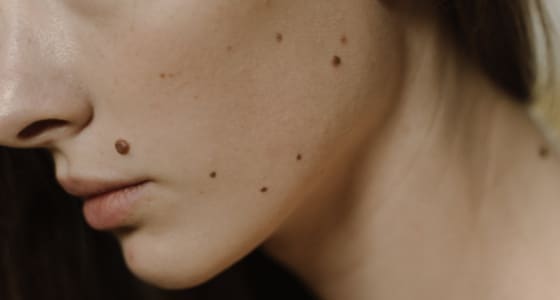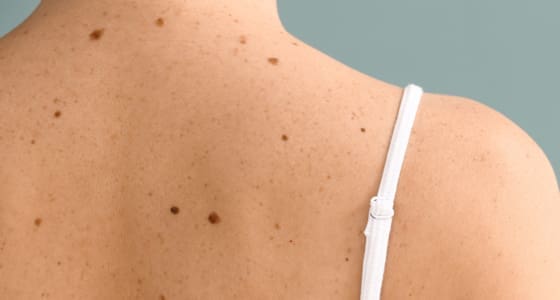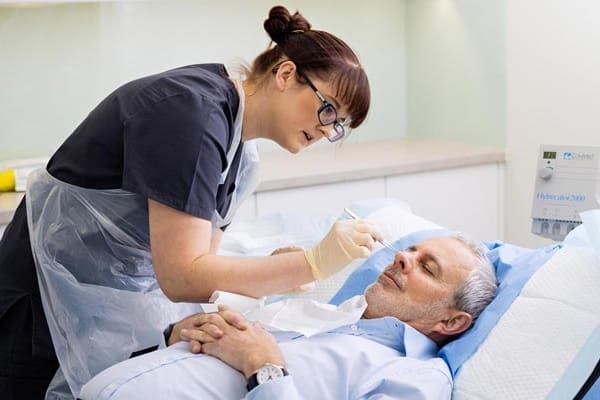Although BCCs rarely spread to other parts of the body, they can invade nearby skin and deeper tissue, causing significant damage if left untreated.
BCCs usually present as small, shiny bumps or pinkish patches of skin. They can have a translucent or pearly appearance and may develop into a sore that doesn’t heal. People often first become aware of BCCs as a scab that bleeds occasionally. If left untreated they can eventually erode the skin causing an ulcer, for this reason BCCs can also be known as ‘rodent ulcers’.
The most common cause of BCC is too much exposure to ultraviolet (UV) light. They can occur anywhere on your body but are most common on areas that are exposed to the sun, such as your face, head, neck, and ears. BCCs mainly affect fair skinned adults and are more common in men than women. In general, the prognosis is excellent as this is a highly curable form of skin cancer. The recurrence rate is low and the risk of spread or metastasis is extremely low
There are several different types of BCC. These include:
- Nodular BCC
This is the most common type, accounting for approximately 80% of cases. It appears as a pinkish or flesh-coloured bump with a translucent or pearly quality. It can have blood vessels on the surface and can ulcerate and/or develop a crust.
- Superficial BCC
This appears as a red scaly patch, more common on the trunk or extremities. It often grows slowly and can be mistaken for a rash or eczema.
- Pigmented BCC
Characterised by the presence of pigmentation ranging from brown to black. It can be mistaken for melanoma.
- Morpheic or Infiltrative BCC
This is a less common but more aggressive form of BCC as it tends to deeply infiltrate surrounding tissues making it difficult to remove. It often appears as a white or yellowish scar-like area. It does not have the typical features of other BCCs.
These are general descriptions only and BCC can appear in many forms and combinations. If you have any new or changing skin lesion or mole, it’s important to seek expert medical advice.
At The Day Clinic we use various methods to remove BCCs, depending on the size, location and severity of the lesion. Most BCCs require surgical removal using surgical excision for skin cancer. Mohs surgery or curettage and electrodessication are also available in certain cases, though less commonly used. Surgical procedures are carried out in one of our purpose-built operating theatres under local anaesthetic. In some cases, BCCs can be treated using non-surgical treatments such as cryotherapy or using topical medications as advised by one of our dermatologists.


